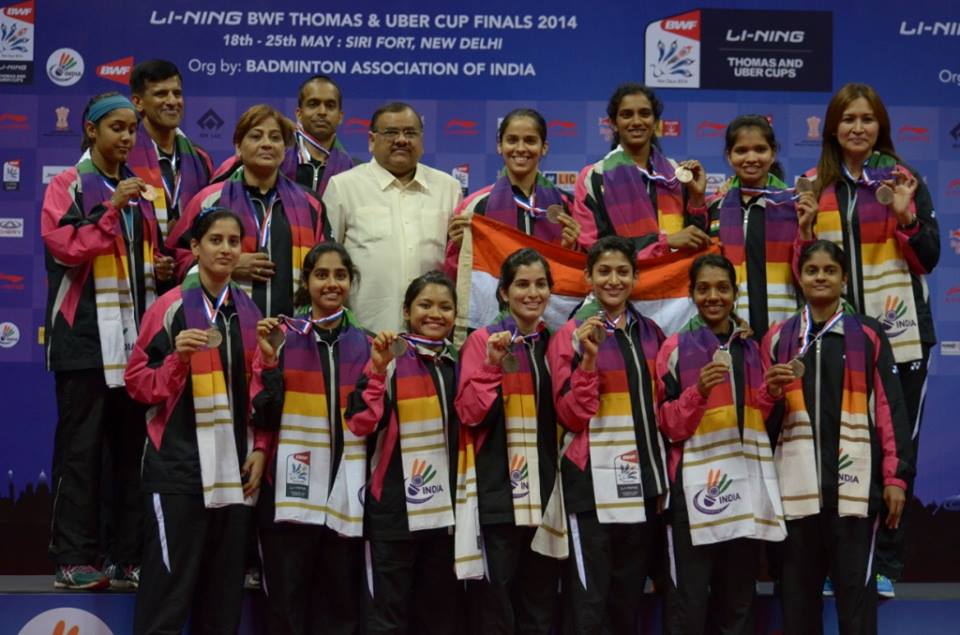Can India end China’s dominance as a badminton superpower?

Three days ago, India’s hopes of a medal in badminton at the Rio Olympics looked bleak. Saina Nehwal had crashed out in the group stages, while the youngsters Kidambi Srikanth and PV Sindhu were expected to bow out in the next round. The scenario has dramatically changed now. PV Sindhu defeated world No.2 and two-time Olympic medallist Wang Yihan in the quarters, and she is one step away from securing a medal, while Srikanth went down fighting in the last-8 clash against the reigning Olympic champion Lin Dan. A new chapter in Indian badminton has started—a start which could take the nation to the category of a superpower in the sport.
But, just like India’s dreams of becoming an economic superpower, the country has one common neighbour standing in the way – China, the mighty of the badminton world.
Although the roots of the modern form of badminton can be found in India, it is their big neighbours who have historically dominated the sport. Since its introduction as an Olympic sport in 1992 Barcelona Games – badminton was a demonstration sport in 1972 Munich games – China has won 16 gold medals out of the 29 available in the sport. While they managed to win just one gold before the 2000 Sydney games, China has won 15 of the 20 gold medals available in the next four editions, including five out of five at the 2012 London Games.
But, China’s Olympic domination will come to a halt at Rio. In women’s doubles, China’s only remaining pair of Tang Yuanting and Yu Yang, who are world No.2, were defeated by Christinna Pedersen and Kamilla Rytter of Denmark, while reigning champions Zhang Nan and Zhao Yunlei, who are the only Chinese at the top of the rankings in any BWF event, suffered an upset in the mixed doubles to Tontowi Ahmad and Liliyana Natsir of Indonesia. To add insult to injury, PV Sindhu knocked out Wang Yihan in the quarter-final of women’s singles.
A slip from the mighty will give a chance to others to take the spot, and that is exactly what India will be aspiring to do in the coming years.
Although they still have men’s doubles pair of Fu Haifeng and Zhang Nan, men’s singles stars Lin Dan, Chen Long, and reigning Olympic champion Li Xuerui in the fray for a gold medal, it is clear that the domination they enjoyed in London won’t be repeated anytime soon. The world rankings have just one Chinese at the top, while in the last six years, one Chinese shuttler
"The way Gopi Chand has ushered in a virtual revolution in the sport, I am pretty confident that India will be a badminton super power in the year 2020. What impresses me most is that when one considers the large number of Indian shuttlers in the top 20 in the both the men's and women's are ample evidence of the fact that we are growing as a badminton nation," Dinesh Khanna, a former Asian champion, had told the Sunday Guardian a year back.
Saina Nehwal was the lone Indian among the superstars of world badminton for many years. But, the emergence of PV Sindhu, Kidambi Srikanth, HS Prannoy, and many other youngsters in the last few years have upped India’s stature in the world of badminton. In the singles event, Indians have

 © Getty Images
© Getty ImagesApart from the big guns, the bench strength is also not too bad for the emerging nation. India currently has five men’s singles players in the top-50, one less than China. In fact, Srikanth, Parupalli Kashyap, Ajay Jayaram, HS Prannoy were all in the top-25 a few months back with Prannoy getting to a career-high 12th same time last year. The upsets Prannoy and Sai Praneeth had against Lin Dan and Lee Chong Wei respectively
Although the strong presence in singles events looks settled for the years to come, doubles events remain a weakness for India.
The situation is not too different in women’s singles. Saina Nehwal and PV Sindhu are the leaders of the pack, but 18-year-old Ruthvika Shivani
Although the strong presence in singles events looks settled for the years to come, doubles events remain a weakness for India.
“We need to strengthen our paired event – only then can we be called a badminton superpower — but this has been happening since 25 years. I would give seven out of 10 to the current badminton scenario in India,” Saina Nehwal’s coach Vimal Kumar had told this a year back to Firstpost.
India’s two doubles pair at Rio – Jwala Gutta/ Ashwini Ponnappa and Manu Attri/ B Sumeeth Reddy bowed out in the group stages of the tournament. While Gutta and Ponnappa failed to win even one match, the men’s doubles pair showed some promise by defeating the higher-ranked Japanese in their last match. Both pairs are ranked outside the top-20 in their events, while India does not even have one pair in the top-50 in the mixed doubles. In fact, India used Saina Nehwal and PV Sindhu as their second women’s doubles pair in the Uber Cup in the absence of a good second doubles team.
However, the appointment of Malaysian Tan Kim Her as a doubles specialist coach, and India’s record tally of shuttlers at Rio point towards a better future for Indian badminton.
2020 is more than 3 years away, and although India is still far away from dominating the sport like China, the performances of Saina Nehwal, Kidambi Srikanth, and PV Sindhu have shown that India can aspire to be a superpower in the sport. The talent and skills will not be stopping us from reaching there, neither it will be infrastructure and funding. The issues that have been plaguing Indian badminton have been the inconsistency of players, and the failure to cross the mental barrier against the Chinese. PV Sindhu’s semi-final victory - the first against a Chinese shuttler in the Olympics in straight-sets – has reignited India’s badminton dreams.

Comments
Sign up or log in to your account to leave comments and reactions
0 Comments